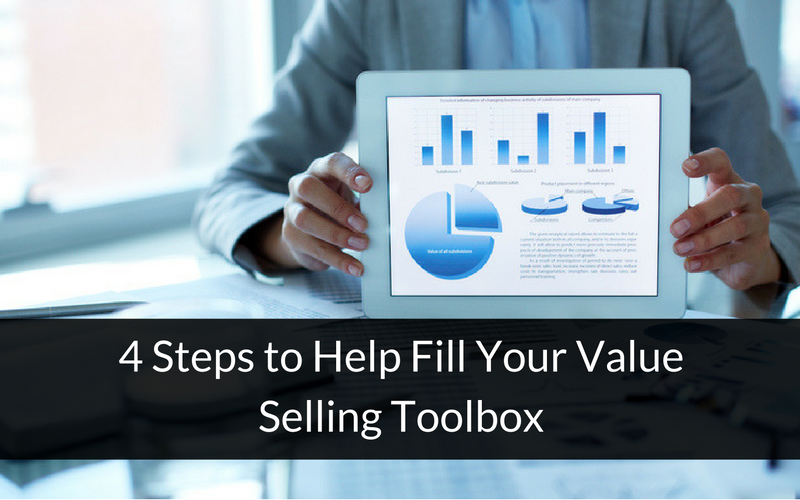
Buyers tend to take the same journey every time they make a high-commitment purchase. They realize there is a problem and begin researching potential solutions. Unfortunately, they are not always methodical in their search.
As a value-seller, there are tools you can use to help steer them in the right direction. Even though today’s buyers have gone further into the sales cycle before contacting you, some of these tools are meant to help prospective customers before they signal their readiness for a sales contact.
Other tools help your sales representatives build a convincing business case to take to the financial decision makers. Whatever the situation, here are four steps to help you fill your value selling toolbox.
1. Define the Problem with an Assessment Tool
The first step to solving any problem is to define it. The buyer understands there is an obstacle holding the business back from success but needs help narrowing down what the problem is.
An assessment tool helps the buyer not only define the problem but realize the scope and magnitude of the issue by comparing it against industry benchmarks and standards. The results of the comparison as presented are so compelling that the buyer begins to move further down the funnel in the direction you helped identify.
You have shown the buyer what is possible (your solution) and how it resolves the specific problem at hand, without personally impinging on the research phase.
2. Gauge the Size of the Problem with a Value Calculator
You have whetted the buyer’s interest by defining the problem. Now you can help illustrate the size of the problem. How much is the buyer’s company spending or losing each day the problem isn’t resolved?
You still have not contacted the buyer, but a value calculator sets up the right conditions for beginning a relationship. The value calculator tool, which can be placed on your website, social media page, or online advertisements, encourages self-qualification by putting a dollar sign on the problem’s impact.
Once the amount of money being lost or spent becomes obvious, the impetus to contact a solution seller becomes very strong.
3. Win the Comparison Game with a Total Cost of Ownership Tool
The total cost of ownership (TCO) takes into account not just the initial purchase price, but the annual outlay for operations, maintenance, and upgrades. Few buyers look beyond the purchase price as they deliberate between two options; many sellers do likewise.
In a head-to-head battle with a competitor, a TCO tool easily builds the case that, while the initial prices may differ, your solution will provide more value at a lower cost over time than the alternate solution. Your sales representative partners with the buyer, using the TCO tool to create a business case.
4. Justify the Investment with an ROI Tool
As the prospective customer has moved along the buyer’s journey, you have helped build a business case that clearly shows the superiority of your solution regarding financial outlay, especially in comparison to another solution.
Your sales representative has provided the buyer with enough convincing ammunition to take your solution to the finance team or CFO.
The ROI tool provides the knockout punch. You show those who have broad business concerns that your solution is worth funding because the investment will be quickly returned, possibly multiple times over.
By showing the payback period as well as the cost to delay fixing the problem, you have drawn a picture of dollar bills flying out of a window that your solution is perfectly poised to shut.
Conclusion
The four tools above fill your value selling toolbox to the brim. You create demand with the assessment tool without pressuring the potential customer and follow up with lead self-qualification with the value calculator. Now your potential customer is ready to speak to you directly.
You come armed with the TCO tool to fend off the competition and add to the business case for resolving the problem with your offering. Finally, you seal the deal with the ROI tool, showing the buyer and finance team that, far from spending their money, they are investing it and it will be returned quickly, potentially several times over.
Each tool is designed to pull the buyer into the sales funnel and grease the slide to the bottom. You can use them to cement your relationship with your new customer and look forward to many happy returns yourself.















